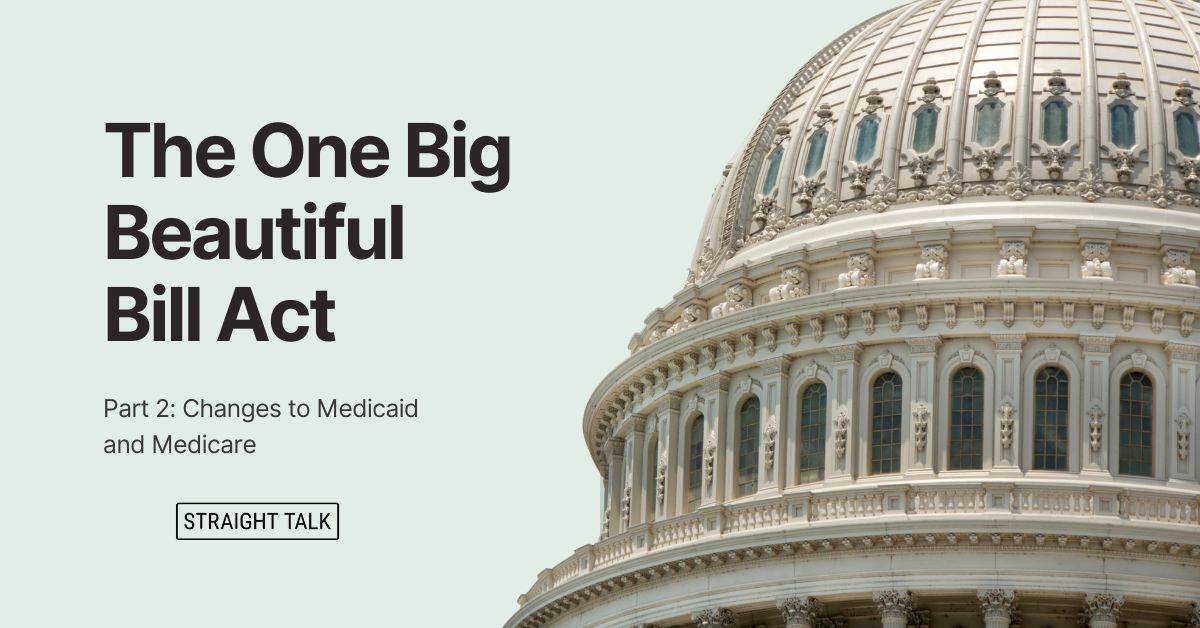This is part two of a three-part series explaining the origins of the Affordable Care Act (ACA) and issues that have arisen, leading up to the currently pending lawsuit to do away with the ACA.
Last time, I told you about what the American health insurance market looked like pre-2008, and the main reasons why people were uninsured.
This time, we’ll cover the 2008 election and how that influenced the development of the ACA.
Let’s start with a riddle: What do you need to impose your will on 18 percent of the entire U.S. economy, worth $3 trillion in every year? What kind of power do you need to make that happen?
The answer: the kind the Democrats received from voters in the 2008 election.
After the 2008 election, in which the Democratic party won the White House and majorities in both the Senate and House of Representatives, it became clear that the nation as a whole had embraced what they were offering. It was the most lopsided result for any one party since 1975, the election right after Watergate. By January 2009, the Democrats had:
- 257 Seats in the House (compared to 178 Republican Seats)
- 60 Seats in the Senate (including one independent Senator who always voted with Democrats)
- The White House/presidency (by a wide margin, a true mandate in electoral votes)
With that kind of power, you can really do whatever you want in Congress as long as the president agrees it is a priority for you, and there is NOTHING the minority party can do to stop you. With their newfound power, the Democrats began writing the Affordable Care Act in February 2009, knowing that they simply had to hold their own caucus together to get it passed.
Make Way for the ACA!
Mike, what were the Democrats really trying to accomplish?
Different party members might answer that different ways, but the “mission statement” underlying the ACA really read like this:
To Expand Meaningful Health Insurance Coverage to the Entire Nation and Do It in a Revenue-Neutral Way
To avoid confusion, I want to point out that the ACA’s authors only used the words “health insurance” in private meetings and within Congress itself. When they were speaking to anyone outside of Congress, they all agreed to use the words “health CARE.” Thus became the conflation between healthcare itself and paying for healthcare, a confusion which exists to this very day. Democrats (and often Republicans, too) use the words healthcare and health insurance interchangeably, even though they are VERY different things.
Ok, Mike, so they had a goal. Didn’t they have a plan to get that done?
Oh my, yes! And it was a strong, formidable, sensible plan that had a pretty good chance of success, in my opinion. I can’t tell you how many conversations I had during 2009 that went like this:
“But Mike, they’ve been threatening to do healthcare reform for years! But nothing ever happens!”
Me: “So with the majorities and people in charge right now, what’s going to stop them?” And I kept preaching that the Democrats were going to pass a bill no matter what. You could just see it in their eyes.
How Was the ACA Going to Become a Law?
Here are the steps to the Democratic plan, which we saw evolve:
- Use the Senate as the controlling force for the creation of the ACA.
- Focus specifically on the Senate HELP (Health, Education, Labor, Pensions) Committee, but let the Finance Committee drive the bus. (Sen. Max Baucus, D-Montana, was chairman).
- Create a bill in the Senate and vote its passage. Then, send it to the House for modifications.
- Let the House pass the amended bill and send it back to the Senate for final changes.
- Approve the marked-up bill in the Senate once more.
- Go off to a quiet place for a conference committee so House and Senate members can work out the inevitable language problems, structure problems and contradictions sure to be present in such a sweeping piece of legislation – then, check, check and re-check the language.
- Add a document giving then-President Obama a clean list of what regulatory support the ACA would require to be successful.
- Have it ready for president’s signature by Labor Day 2010.
You can see the kind of structure and elegance of the plan. It gave the Democrats a full year or more to get comments from all their sympathetic stakeholders, to work out the bugs, to make sure the bill was air-tight and ready to launch when they voted it through. It would even include a punch list of things the president would need the relevant federal agencies to get done (Center for Medicare & Medicaid Services, Department of Labor, Department of the Treasury/IRS). With a well-written and well-vetted bill, that punch list would be pretty short.
It really was a good plan. Plus, it got everything done BEFORE the 2010 mid-term elections, when the Democrats figured they would lose a few seats and not be able to pass anything so sweeping. Once I saw the plan, it was clear it could make major changes to the health insurance marketplace.
A part of that plan was to warn off lobbying groups that might oppose what the ACA would do. That part of the plan was made manifest when the leadership in the House and Senate started making public appearances to shred the reputations of health insurance companies at every turn. Even the president joined this effort. They signaled strongly, telling carriers that if they opposed the ACA, they would be shut out of the program and any money that came through it.
Where Things Started to Go Wrong
Mike, what went wrong? IS the ACA today what the Democrats wanted?
Well, not exactly. Several things happened that no one could have anticipated, including me.
First, the Senate Finance Committee, which really controlled the content of the final bill to be voted upon, began to gradually, quietly, without fanfare, shut out the Republican members of the committee. Typically, it is quite common for the opposition/minority party to offer amendments to pieces of legislation that they don’t like and have it shot down. But, the ACA negotiation in Senate Finance was (or at least, should have been) different. We weren’t talking about a couple billion for a weapons program, or a few interstate highway miles or Medicare adjustments. The ACA literally affected EVERY facet of the healthcare industry, including the 160+ million people who were getting health insurance from their jobs. It was arguably the most sweeping piece of legislation, in financial terms, EVER passed by the U.S. government.
For the Democrats to ignore every Republican idea, amendment, suggestion and technical adjustment without a single addition during the entire process, which is what happened in the House (as expected) and in the Senate (less expected), was, I would argue, a major reason we are still fighting over the ACA today. Centrist Republicans like Sen. Susan Collins and Sen. Olympia Snowe even had their simple suggestions about the ACA shot down.
“Elections have consequences,” we heard again and again from the Democrats during the ACA formation process. I would argue that passing a bill on a straight party-line vote without taking any input from a single minority party suggestion or amendment, especially a bill that essentially rerouted $3 trillion a year and reformed every facet of healthcare in the United States would guarantee endless warfare. Hubris squared. And today, we can see that it has.
But, the Democrats’ plan was about to go awry, thanks to a monkey wrench that no one saw coming, not even me… We’ll go over that next time.
Part I: Cracks in the Foundation
Part III: Missing Pieces





How do we get rid of the Marketplace. That 3rd party is causing a lot of expense. We need to deal directly with the insurance companies.
Rai!
Thanks for your question. AS you know, people can buy insurance outside the Marketplace if they would like, but there are no tax credits or cost sharing reductions outside of the marketplace. The notion that the Fed would actually throw money into private health insurance without it being sold in an environment that they had total control over (or at the least set the standards for, and people had to pay to use) seems unlikely to me. Just too many $Billions involved for them to not use a government-operated marketplace.
Sorry I don’t have better news, but as of now that’s what I think.
thanks..mrb